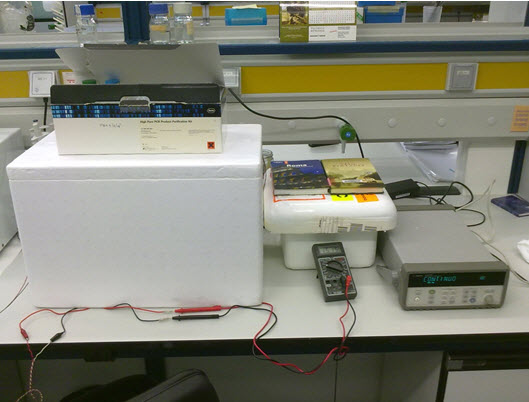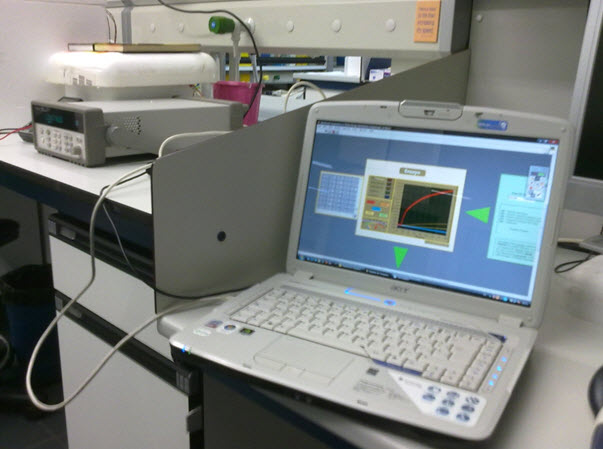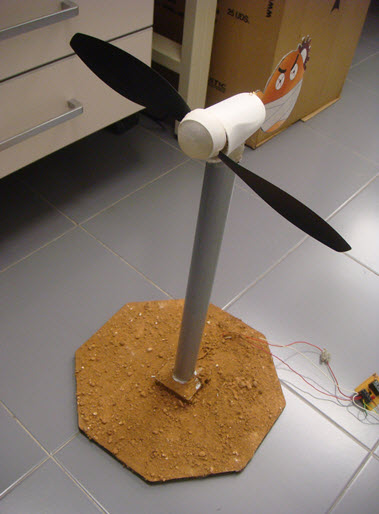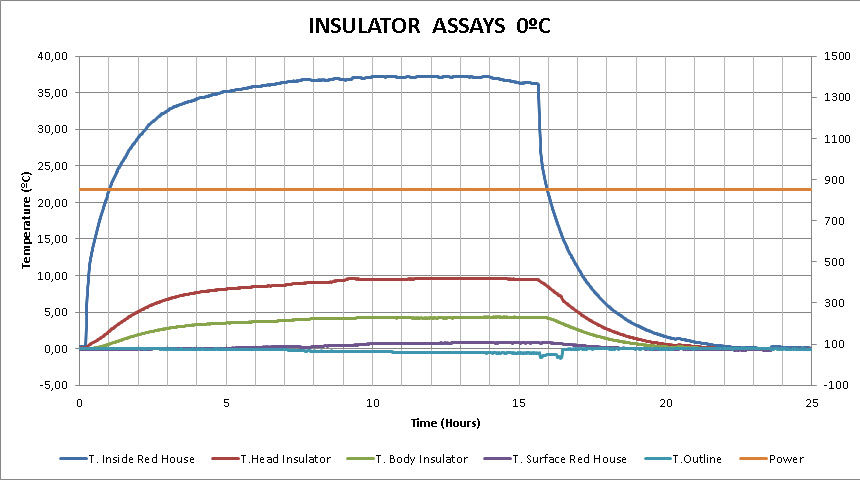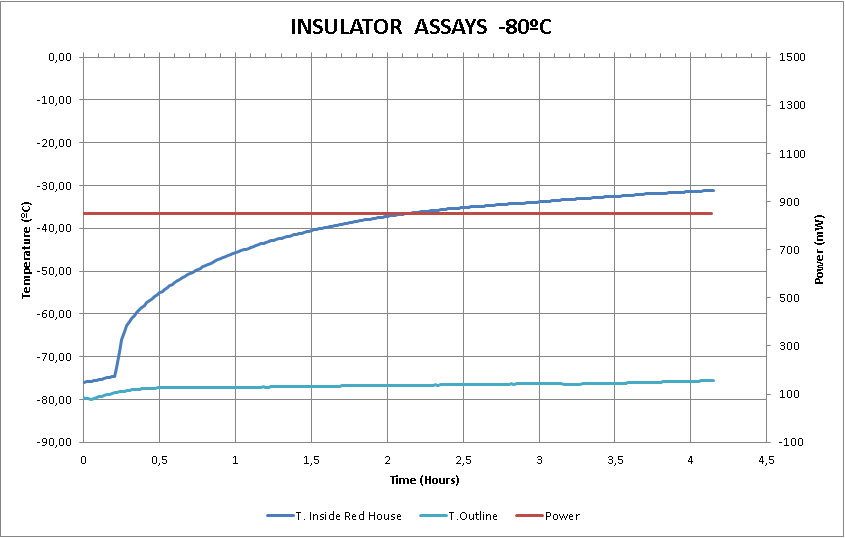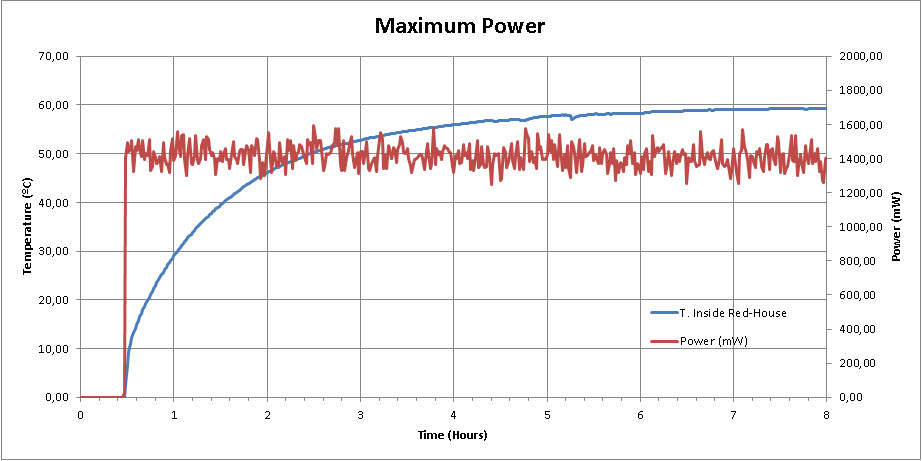Team:Valencia/RH
From 2010.igem.org
Alejovigno (Talk | contribs) |
Alejovigno (Talk | contribs) (→Defining the Red House) |
||
| Line 12: | Line 12: | ||
The main objective of this system is to verify the capability of protecting the cultures located inside the Red House device. This protection against the harsh environmental conditions on Mars is only the first step because after that we aim to set a dynamic system inside the Red House in order to maintain the best growing conditions inside of it. | The main objective of this system is to verify the capability of protecting the cultures located inside the Red House device. This protection against the harsh environmental conditions on Mars is only the first step because after that we aim to set a dynamic system inside the Red House in order to maintain the best growing conditions inside of it. | ||
| - | [Image:Valencia_rh_stand.jpg|thumb|center|300px|Setting of the Red-House in the bench.]] | + | [[Image:Valencia_rh_stand.jpg|thumb|center|300px|Setting of the Red-House in the bench.]] |
| - | [Image:Valencia_rh_stand1.jpg|thumb|center|400px|Setting of the Red-House in the bench.]] | + | [[Image:Valencia_rh_stand1.jpg|thumb|center|400px|Setting of the Red-House in the bench.]] |
| - | [Image:Valencia_rh_windmill.jpg|thumb|center|400px|Windmill.]] | + | [[Image:Valencia_rh_windmill.jpg|thumb|center|400px|Windmill.]] |
The primary objetive of protecting cultures against extreme temperatures is achieved by the thermal isolation the Red House provides. The Red House is able to maintain a closed atmosphere from the exterior. Besides temperature, the Red House protects as well against UV radiation, especially the range between 200 and 320 nm, which is very harmful for organisms. | The primary objetive of protecting cultures against extreme temperatures is achieved by the thermal isolation the Red House provides. The Red House is able to maintain a closed atmosphere from the exterior. Besides temperature, the Red House protects as well against UV radiation, especially the range between 200 and 320 nm, which is very harmful for organisms. | ||
| Line 42: | Line 42: | ||
As you can see in the graphics above it is possible that sometimes the power production exceeds the temperature necessity of the cultures. In this situations the temperature would increase becoming harmful for the cultures. In order to avoid this situation, it was decided that it was mandatory to have the possibility of regulating the electric power coming into the system. Therefore we can control the temperature inside the Red House according to the external conditions and our necessities. | As you can see in the graphics above it is possible that sometimes the power production exceeds the temperature necessity of the cultures. In this situations the temperature would increase becoming harmful for the cultures. In order to avoid this situation, it was decided that it was mandatory to have the possibility of regulating the electric power coming into the system. Therefore we can control the temperature inside the Red House according to the external conditions and our necessities. | ||
| + | [[Image:Valencia_rh_graphic4.jpg|thumb|center|400px|Controlled temperature inside the Red-House.]] | ||
| + | |||
| + | In the graphic above you can see the temperature inside the Red House reaching and maintaining a value of 30ºC. This temperature ensures the best growing conditions for the yeast cultures. | ||
| + | |||
| + | In order to achieve a proper control of the system it is essential to measure the evolution of the temperatures inside the Red House and the power coming into the device at the same time. With this data available we can regulate the temperature the way we want in each moment. | ||
| + | |||
| + | The temperature measures are carried out using thermocouples located in precise places both inside and outside the device. The Red House has different insulator layers and the temperatures are measured in each layer as well. The signal produced by those measures ends in a acquisition and capture data system called Datalogger (LINK DATALOGGER). At the same time all sensors are connected to an ice compensation chamber to prevent measurement errors [[:Team:Valencia/TMS | Temperature compensation system]]. | ||
| + | |||
| + | On the other hand, the power produced by the system is calculated directly by measuring the voltage and the electric current going through the system. In the next group of graphics you may visualize the voltage, the electric current and the power generated by the wind turbine. | ||
</div> | </div> | ||
Revision as of 19:43, 27 October 2010
Time goes by...
(El tiempo pasa...)
Follow us:

Our main sponsors:

Our institutions:

Visitor location:
» Home » The Project » Creating Technologies
Red-House
Defining the Red House
The device that we call Red House is a planetary incubator chamber that insulates our cultures and allows them to grow up in an extreme environment like Mars. It is pretty much like an improved greenhouse on Mars. Furthermore, it can supply itself with energy coming from a windmill which produces energy from the strong martian wind. This renewable source of energy is absolutely essential for the working of the Red House.
The main objective of this system is to verify the capability of protecting the cultures located inside the Red House device. This protection against the harsh environmental conditions on Mars is only the first step because after that we aim to set a dynamic system inside the Red House in order to maintain the best growing conditions inside of it.
The primary objetive of protecting cultures against extreme temperatures is achieved by the thermal isolation the Red House provides. The Red House is able to maintain a closed atmosphere from the exterior. Besides temperature, the Red House protects as well against UV radiation, especially the range between 200 and 320 nm, which is very harmful for organisms.
In order to maintain a constant and renewable supply of electric power for the Red House, two different alternatives were studied:
- Windmill, which uses a eolic energy
- Peltiers cells that produce power using solar energy
Measuring the Red House
The electric power produced this way is distributed into the thermal insulation device, where it feeds a electric resistance. Due to the Joule effect this resistance transform the incoming electric energy into thermal energy and warms up the interior of the Red House. In the next graph it is shown the difference between the internal and the external temperature. As you can see the insulation achieved is quite good. The Red House is able to maintain a 60ºC difference between outside and inside. The -80ºC conditions were achieved using frozen carbon dioxide.
Once the test were conducted, it was clear that due to the space, time and budget limitations the best option was the wind turbine. At the same time, we carried out a series of tests that allow us to determine the exact amount of electric power needed for ensure an optimal growing environment for the cultures inside the Red House. Test with the wind turbine where conducted in order to make the necessary design changes to reach the optimal energy production.
As you can see in the graphics above it is possible that sometimes the power production exceeds the temperature necessity of the cultures. In this situations the temperature would increase becoming harmful for the cultures. In order to avoid this situation, it was decided that it was mandatory to have the possibility of regulating the electric power coming into the system. Therefore we can control the temperature inside the Red House according to the external conditions and our necessities.
In the graphic above you can see the temperature inside the Red House reaching and maintaining a value of 30ºC. This temperature ensures the best growing conditions for the yeast cultures.
In order to achieve a proper control of the system it is essential to measure the evolution of the temperatures inside the Red House and the power coming into the device at the same time. With this data available we can regulate the temperature the way we want in each moment.
The temperature measures are carried out using thermocouples located in precise places both inside and outside the device. The Red House has different insulator layers and the temperatures are measured in each layer as well. The signal produced by those measures ends in a acquisition and capture data system called Datalogger (LINK DATALOGGER). At the same time all sensors are connected to an ice compensation chamber to prevent measurement errors Temperature compensation system.
On the other hand, the power produced by the system is calculated directly by measuring the voltage and the electric current going through the system. In the next group of graphics you may visualize the voltage, the electric current and the power generated by the wind turbine.
 "
"
